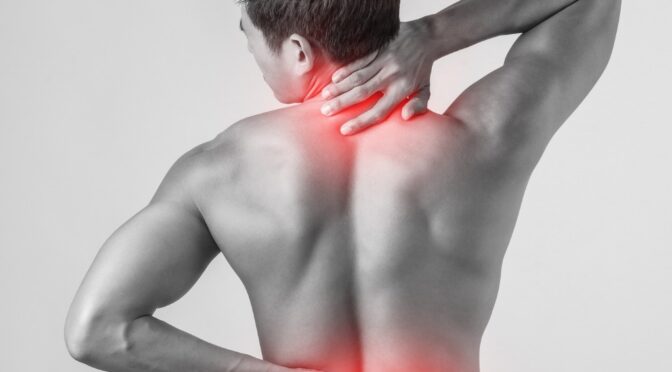Understanding Hip and Pelvic Pain
Hip and pelvic pain can be a confounding experience, often leaving individuals feeling trapped in a cycle of discomfort and confusion. The hips and pelvis serve as crucial support structures for the body, playing a vital role in maintaining balance and facilitating movement. When pain arises in these areas, it can significantly disrupt daily activities, making even the simplest tasks challenging. Understanding the anatomy and function of the hips and pelvis is the first step towards unraveling the mystery behind the pain that often links them together.
The hips are ball-and-socket joints where the femur (thigh bone) connects to the pelvis. This configuration allows for a wide range of motion, essential for activities like walking, running, and bending. The pelvis, on the other hand, is a basin-shaped structure composed of several bones including the ilium, ischium, and pubis. It supports the weight of the upper body and connects the spine to the lower limbs. The complex interplay between these structures means that an issue in one can easily affect the other, leading to concurrent pain.
Many people underestimate the interconnectedness of the hips and pelvis, often viewing them as separate entities. However, the reality is that they work in tandem, supported by a network of muscles, ligaments, and tendons. This intricate relationship means that stress or injury in one area can create a ripple effect, causing discomfort in the other. Recognizing this connection is vital for those seeking to understand and address their hip and pelvic pain effectively.
Common Causes of Hip and Pelvic Pain
Hip and pelvic pain can stem from a myriad of causes, some of which are more common than others. One prevalent cause is osteoarthritis, a degenerative joint disease that affects the cartilage cushioning the hip joint. As the cartilage wears down, it leads to pain and stiffness, which can extend to the pelvic region. Osteoarthritis is particularly common in older adults, though it can affect younger individuals as well, especially those with a family history of the condition.
Another common culprit is tendinitis, which occurs when the tendons connecting muscles to bones become inflamed. This inflammation can result from repetitive motions or overuse, often seen in athletes or individuals with physically demanding jobs. Tendinitis in the hip can cause pain that radiates to the pelvis, as the muscles and tendons work to stabilize the joint. Similarly, bursitis, the inflammation of the small fluid-filled sacs that cushion the joints, can lead to similar discomfort.
In addition to these musculoskeletal issues, hip and pelvic pain can also be caused by injuries such as fractures or dislocations. Trauma from falls, accidents, or sports injuries can impact both the hip and pelvic regions, resulting in acute pain. In some cases, underlying medical conditions like hernias, gynecological issues, or even kidney stones can manifest as hip and pelvic pain, making diagnosis and treatment a complex process. Understanding the potential causes is essential for addressing the root of the problem and finding relief.
The Connection Between Hip and Pelvic Pain
The connection between hip and pelvic pain is a topic that often surprises those unfamiliar with the intricacies of human anatomy. At the heart of this relationship is the shared structural and functional roles that bind the hips and pelvis together. Both areas are integral to the support and movement of the lower body, meaning that dysfunction in one can have a direct impact on the other. This interconnectedness is crucial for understanding why pain in one area is frequently accompanied by discomfort in the other.
Muscular imbalances are a common factor that links hip and pelvic pain. When certain muscles around the hips and pelvis become overactive or underactive, it can lead to changes in posture and movement patterns. For instance, tight hip flexors can pull on the pelvis, creating an anterior tilt that strains the lower back and pelvic region. Conversely, weak gluteal muscles can lead to instability in the hip joint, causing compensatory movements that stress the pelvis.
Additionally, the nerves that supply the hips and pelvis can contribute to their shared pain experience. The sciatic nerve, for example, runs from the lower back through the hips and down each leg. Compression or irritation of this nerve can result in sciatica, a condition characterized by pain that radiates from the lower back to the hips and pelvis. This nerve-related pain highlights the interconnected nature of these regions and underscores the importance of addressing both areas when seeking relief.
Symptoms to Watch For
Recognizing the symptoms of hip and pelvic pain is a critical step towards effective diagnosis and treatment. One of the most common symptoms is a persistent aching or stiffness in the hip joint or pelvic region. This discomfort may worsen with physical activity, prolonged sitting, or standing, and can feel particularly intense in the morning or after periods of rest. Paying attention to the pattern and intensity of the pain can provide valuable insights into its underlying cause.
In addition to general discomfort, individuals may also experience more specific symptoms such as swelling, warmth, or redness around the affected area. These signs suggest inflammation, which is often associated with conditions like tendinitis or bursitis. In some cases, the pain may be accompanied by a reduced range of motion, making it difficult to perform everyday activities like bending, walking, or climbing stairs. Such limitations can significantly impact one’s quality of life, highlighting the need for timely intervention.
Another important symptom to watch for is referred pain, which occurs when discomfort is felt in a location distant from its source. For instance, pain originating in the hip may be perceived in the groin, thigh, or even the knee. Similarly, pelvic pain can manifest as lower back discomfort. Understanding these atypical presentations is essential for accurate diagnosis and ensuring that treatment targets the true source of the pain rather than just its symptoms.
Diagnosing Hip and Pelvic Pain
Accurate diagnosis is paramount when it comes to addressing hip and pelvic pain, as it enables tailored treatment plans that target the specific underlying cause. The diagnostic process typically begins with a comprehensive medical history and physical examination. During this initial assessment, healthcare providers may inquire about the onset, duration, and nature of the pain, as well as any previous injuries or medical conditions that could be contributing factors.
Imaging studies are often employed to gain a clearer picture of the structures involved. X-rays can reveal changes in bone architecture, such as fractures or arthritis-related degeneration. For a more detailed view, magnetic resonance imaging (MRI) or computed tomography (CT) scans may be utilized to assess the soft tissues, including muscles, tendons, and ligaments. These advanced imaging techniques are invaluable in identifying conditions like tendinitis, bursitis, or hernias that may not be visible on standard X-rays.
In some cases, diagnostic injections may be used to pinpoint the source of pain. By injecting a local anesthetic into specific areas, doctors can determine if temporary pain relief occurs, thereby confirming the involvement of that structure in the patient’s symptoms. This targeted approach helps distinguish between multiple potential sources of pain and ensures that treatment strategies are appropriately directed. Ultimately, a thorough diagnostic process is essential for developing a treatment plan that effectively addresses the root cause of hip and pelvic pain.
Treatment Options for Relief
Once the cause of hip and pelvic pain has been identified, a range of treatment options can be explored to provide relief and restore function. One of the most common approaches is physical therapy, which focuses on strengthening the muscles around the hip and pelvis to improve stability and reduce strain. Customized exercise programs tailored to the individual’s needs can enhance flexibility, correct muscular imbalances, and promote better posture and movement patterns.
In addition to physical therapy, medication may be prescribed to manage pain and inflammation. Nonsteroidal anti-inflammatory drugs (NSAIDs) such as ibuprofen or naproxen are often recommended for their ability to reduce swelling and alleviate discomfort. For more severe pain, doctors may consider corticosteroid injections to deliver targeted relief directly to the affected area. These injections can provide significant pain reduction, allowing individuals to participate more effectively in rehabilitation exercises.
In cases where conservative treatments are ineffective, surgical intervention may be necessary. Surgical options vary depending on the specific condition, ranging from minimally invasive procedures to more extensive surgeries. For example, arthroscopic surgery can address issues like labral tears or impingement in the hip joint, while hip replacement surgery may be considered for severe arthritis. The decision to pursue surgery is typically made after a thorough evaluation of the patient’s condition and consideration of potential risks and benefits.
Preventative Measures to Avoid Pain
Prevention plays a vital role in minimizing the risk of developing hip and pelvic pain, and adopting certain lifestyle changes can be highly effective. One of the most important preventative measures is maintaining a healthy weight, as excess body weight places additional stress on the hips and pelvis, increasing the likelihood of joint degeneration and injury. A balanced diet and regular exercise can help manage weight and promote overall musculoskeletal health.
Engaging in regular physical activity is another key factor in preventing hip and pelvic pain. Activities that promote strength, flexibility, and cardiovascular fitness can enhance joint stability and reduce the risk of injury. Low-impact exercises such as swimming, cycling, or walking are particularly beneficial, as they provide cardiovascular benefits without placing excessive strain on the joints. Incorporating strength training exercises that target the core, hips, and lower extremities can further bolster stability and support.
Proper body mechanics and ergonomic considerations are also crucial for preventing pain. Paying attention to posture during daily activities, such as sitting, standing, or lifting, can reduce stress on the hips and pelvis. Using ergonomic furniture and equipment, taking frequent breaks during prolonged activities, and practicing good lifting techniques can all contribute to minimizing the risk of strain or injury. By adopting these preventative measures, individuals can significantly reduce their risk of developing hip and pelvic pain and promote long-term joint health.
The Role of Physical Therapy
Physical therapy is a cornerstone in the treatment and prevention of hip and pelvic pain, offering a non-invasive approach that can yield significant benefits. A physical therapist works closely with patients to develop individualized exercise programs that target specific weaknesses and imbalances. These programs are designed to improve flexibility, strength, and stability, ultimately enhancing joint function and reducing pain.
One of the primary goals of physical therapy is to increase the range of motion in the hip and pelvic joints. Through a combination of stretching exercises and manual therapy techniques, therapists can help release tight muscles and improve joint mobility. This increased flexibility not only alleviates existing discomfort but also helps prevent future pain by promoting more efficient movement patterns.
Another critical aspect of physical therapy is education. Therapists provide valuable guidance on body mechanics, posture, and ergonomic adjustments that can be applied to daily activities. By teaching patients how to move safely and efficiently, therapists empower them to take an active role in managing their condition and preventing recurrence. This educational component, combined with targeted exercises, makes physical therapy an essential tool in addressing hip and pelvic pain effectively.
When to Seek Medical Attention
While many cases of hip and pelvic pain can be managed with conservative measures, there are certain situations where seeking medical attention becomes imperative. If the pain is severe, persistent, or accompanied by other concerning symptoms, such as fever, unexplained weight loss, or changes in bowel or bladder function, it is crucial to consult a healthcare professional. These symptoms may indicate an underlying condition that requires prompt evaluation and treatment.
Additionally, if pain is the result of a traumatic injury, such as a fall or accident, immediate medical attention is necessary to rule out fractures or dislocations. Delaying treatment in such cases can lead to complications and prolonged recovery. Similarly, if conservative treatments like rest, ice, or over-the-counter medications fail to provide relief after a reasonable period, it is advisable to seek further evaluation to determine the cause and explore alternative treatment options.
Ultimately, listening to your body and seeking timely medical attention can prevent minor issues from escalating into more significant problems. Early intervention not only facilitates more effective treatment but also improves the chances of a full recovery. By prioritizing health and being proactive in seeking care when needed, individuals can better manage their hip and pelvic pain and maintain an active, fulfilling lifestyle.
Conclusion: Managing Hip and Pelvic Pain Effectively
Managing hip and pelvic pain requires a multifaceted approach that addresses both the underlying causes and the symptoms. By understanding the intricate relationship between these two areas, individuals can take proactive steps to alleviate discomfort and improve their quality of life. Whether through lifestyle modifications, physical therapy, or medical interventions, there are numerous strategies available to manage and prevent pain effectively.
Educating oneself about the anatomy and function of the hips and pelvis is a crucial first step in this journey. Recognizing the common causes and symptoms of pain allows for more informed discussions with healthcare providers and empowers individuals to make decisions that align with their health goals. With the right knowledge and resources, it is possible to navigate the complexities of hip and pelvic pain successfully.
Ultimately, the key to managing hip and pelvic pain lies in a combination of proactive prevention, timely intervention, and a commitment to maintaining overall health and well-being. By embracing a holistic approach and working closely with healthcare professionals, individuals can reclaim their comfort and mobility, paving the way for a more active and fulfilling lifestyle. Through understanding and action, the puzzle of hip and pelvic pain can be unraveled, leading to lasting relief and improved quality of life.




